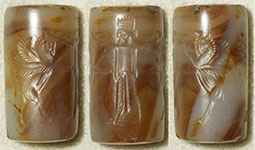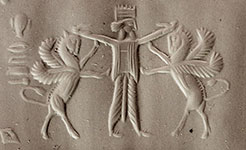A Mini-Exhibit at the Oriental Institute Museum
The Robert and Deborah Aliber Persian Gallery, October 5 2013 – February 2, 2014
“I am Cyrus, king of the whole world, great king, mighty king, king of Babylon, king of Sumer and Akkad, king of the four quarters of the world, son of Cambyses, great king, king of Anshan, grandson of Cyrus, great king, king of Anshan, descendant of Teispes, great king, king of Anshan, of a lineage of eternal royalty … When I entered Babylon peacefully, I established the seat of my dominion in the royal palace to great rejoicing … My vast army paraded within Babylon in peace. I allowed all of Sumer and Akkad to have nothing to cause fear …"
So states part of the Cyrus Cylinder, an important cuneiform inscription that records the capture of Babylon in 539 BC by the Persian ruler Cyrus II, known as Cyrus the Great. It has often been referred to as the first bill of human rights as it mentions the restoration of sanctuaries and the return of exiled people and their god-images to parts of Mesopotamia. It is also associated with the biblical book of Ezra, which tells how Cyrus allowed the return of Jews from exile in Babylon to rebuild their temple in Jerusalem.
This mini-exhibit presents a modern copy of the Cyrus Cylinder recently donated to the Oriental Institute by the Federation of Zoroastrian Associations of North America. The original cylinder is in the collections of the British Museum (on a US tour until December 2, 2013).
The display shows how Cyrus projected his kingship in a Babylonian setting and presented himself as a legitimate ruler of Babylon. Other objects, such as coins and seals, show how Persian rulers used words and images to portray their rule across the Persian empire.




